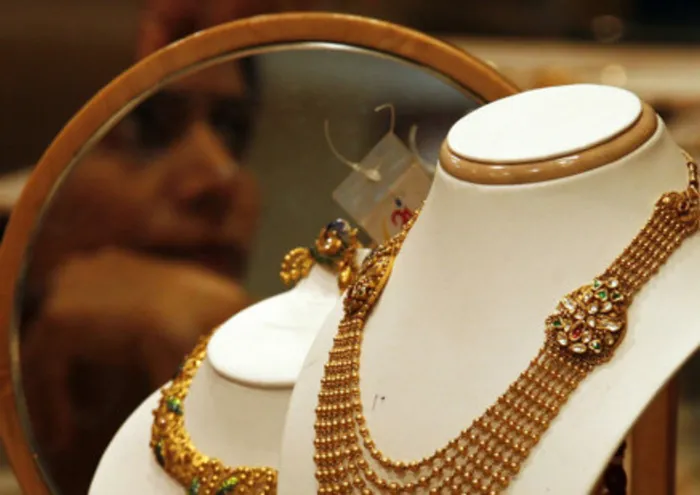Gold headed for fourth weekly loss

A woman is reflected on a mirror inside a gold jewellery shop in the western Indian city of Ahmedabad. A woman is reflected on a mirror inside a gold jewellery shop in the western Indian city of Ahmedabad.
Gold rose on Friday, led by a rebound in the euro, but was still set for a fourth consecutive weekly loss, due to patchy consumer demand and evidence of the waning investor appetite for the metal as confidence in the economic outlook strengthens.
Global equities came under pressure on Friday, having touched eight-month peaks earlier in the week, as concerns resurfaced over the health of the Chinese and euro zone economies and a renewed focus on the debt burdens of Spain and Italy tempered some investors' enthusiasm.
This month, the gold price has lost nearly 3 percent in value, as a shift in the perception among investors of the health of the US economy in particular has made so-called safe-haven assets such as gold or US Treasuries less attractive compared with stocks or higher-yielding currencies.
The pressure from the weaker gold price on investment in exchange-traded funds backed by physical metal, made itself felt, resulting in the largest one-day fall in holdings on Friday in three months.
Spot gold was up around 0.3 percent at $1,649.76 an ounce by 13:05 SA time, having recovered from a low of $1,627.68 on Thursday, but still on course a 0.6 percent decline on the week, the fourth weekly loss in a row.
“The strength of the US economy is a negative for gold from the perspective of the US dollar as well as from the perspective of the portfolio flows for US investors,” Nic Brown, head of commodity research at Natixis, said.
“We've been negative on gold for a little while; we do think that it's passed its peak. Over the medium to long-term horizon we expect to see prices quite a bit lower,” he said.
Gold's inverse correlation to the dollar index, which broke a key level of support on Friday, has held at around -45 percent for the last week, indicating that the gold price remains prone to moving in the opposite direction to the US currency.
While this is normally the case, the unfolding of the euro zone debt crisis last year saw this relationship between the two turn positive for much of 2011 as investors fled the euro and euro-denominated assets.
VIEW CHANGES
Markets are attaching a lower chance of the US Federal Reserve embarking on a fresh round of government-bond buying, or quantitative easing, to keep short-term interest rates low to stimulate growth, and this shift has been a key driver in this month's fall in the gold price.
“We think that quantitative easing and abnormally low US interest rates have been a huge support for gold prices. It's no surprise that the falling gold price recently has been accompanied by quite a significant rise in US interest rates,” Brown said.
“Gold doesn't have a yield or a dividend or anything like that so as interest rates rise, your opportunity cost of holding gold increases.”
Investors in gold via ETFs have cashed in on their positions fairly heavily this week, forcing an outflow of nearly a quarter of a million ounces of gold in just one day, the largest net one-day fall since Dec. 23 2011, and bringing holdings to a one-month low of 70.431 million ounces.
ETP holdings hit a record of nearly 70.9 million ounces on Tuesday, but the past couple of days of outflows have wiped out all of the build-up that had taken place so far in March.
“Yesterday's decline was the largest outflow since the beginning of the year, which pushed this month's net position into negative territory: month-to-date, global ETFs are down by 155koz. Indeed, this now raises the question of whether this is the beginning of a much more substantial exit,” Edel Tully, a strategist at UBS, said in a note.
“Right now, we're paying attention to their behaviour in the short-term, as being the less-fickle investor grouping, their actions emit important signals at a time when confidence in gold is shaky,” she said, referring to the normally longer-term horizon of a typical ETF investor.
Silver took its lead from gold, rising by 0.5 percent to $31.71 an ounce, as did the platinum group metals.
Platinum rose 0.4 percent to $1,619.49 an ounce, while palladium gained 1.0 percent on the day to reach $655.22 an ounce. - Reuters